Publications
Filter by type:
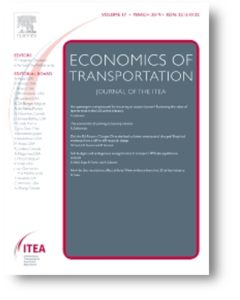
Abstract
This study examines the on-time performance (OTP) effects of the 2016 Federal Aviation Administration’s decision to remove takeoff and landing limits at Newark Liberty Airport. Using the synthetic control method, we compare Newark Liberty’s OTP to that of a weighted collection of comparable airports in the United States. Exploiting the regulatory change as a credibly exogenous shock to arrival OTP, we find that arrival delay minutes increased by up to 23 minutes from an average of 8 minutes, while the share of late-arriving flights increased by up to 14 percentage points. These results are robust to other measures of arrival OTP.
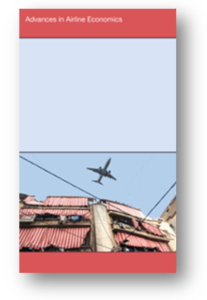
Abstract
Given that a prerequisite for COVID-19 transmission is the interaction between individuals, it is reasonable to suspect that transportation networks may contribute to the spread of COVID-19. This study uses the air transportation network to quantify the risk of COVID-19 spread in the United States. The proposed model is applied at the county level and identifies the risk of importing COVID-19-infected passengers into a given county. We also undertake an examination of the factors influencing the spread of COVID-19 in relation to air travel. Utilizing an extensive dataset encompassing various socio-economic, demographic, and healthcare-related variables, our results indicate a positive relationship between these factors and the relative risk of COVID-19 spread, highlighting the pronounced impact of population density, air travel volume, and larger household sizes on increasing travel-related risk. Conversely, greater healthcare capacity, particularly in terms of hospital and intensive care unit (ICU) beds, is associated with reduced risk. We provide estimates of expected relative risk for each county and a ranking that can be useful for informing public health policies to stem the spread of the virus by devoting resources such as screening and enhanced travel protocols to airports located in at-risk counties.
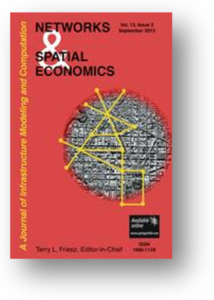
Abstract
We investigate the impact of multimarket contact on market power. We analyze this question in the U.S. airline industry where concomitant cross-market interactions among competing carriers abound. Collecting data from the U.S. Bureau of Transportation Statistics and exploiting a methodology that allows us to compute the Lerner index (proxy for market power), we find that multimarket contact between carriers has a U-shaped effect on market power. This suggests that there exists a threshold level of multimarket contact for carriers that compete across multiple markets to recognize their interdependences and begin to mutually forbear.
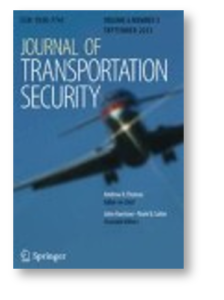
Abstract
Laser pointers directed at commercial aircraft by individuals in the vicinity of airports and flight routes are a growing threat to the safety of air travel. During a critical phase of flight, such as landing or takeoff, a laser strike can cause significant distraction or visual impairment to the pilot. This paper investigates laser-related incidents and injury in the United States over the last decade. Using daily data on laser exposure reported by pilots and crew members, and controlling for laser color, hour of the day, day of the week, among other controls, we find that the likelihood of suffering a laser-induced injury is inversely proportional to altitude, but positively related to laser incident frequency.
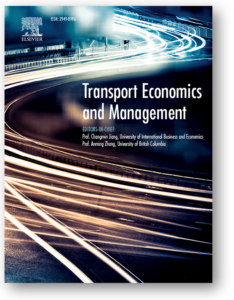
Abstract
The regulatory change in takeoff and landing restrictions that occurred at Newark Liberty Airport provides an opportune set of conditions to study the effect of a plausibly exogenous shock to airfares. In 2016, the Federal Aviation Administration changed Newark Liberty’s classification from Level 3 to Level 2 (less restrictive designation). In order to isolate the policy impact on airfares, we compare airfare changes in markets that include Newark as endpoint with markets that do not. These markets are analyzed before and after the policy event with a special emphasis on United Airlines which controlled 73 percent of the slots at Newark. While airfares declined overall, the airfare gap between the Newark and non-Newark markets suggests that Newark airfares were shielded from the full extent of the airfare decrease, resulting in a lesser decline than would have been anticipated in the absence of the regulatory change.
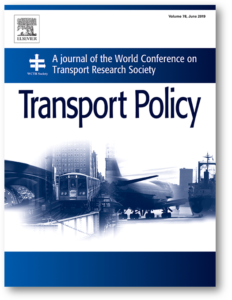
Abstract
To incentivize competitive conduct, the US Department of Justice restricted codesharing between Alaska Airlines and American Airlines in several route scenarios as a condition for allowing the former to acquire Virgin Airlines. Have these restrictions incentivized competitive conduct? This paper investigates their effects on output, price, and revenue in these route scenarios. Estimation results suggest that output and price have significantly decreased, particularly for routes between the airlines’ hubs or focus cities, indicating that the restrictions have not incentivized competitive conduct. Rather, the decrease in both output and price suggests that consumers’ demand has decreased. Welfare for consumers and airlines has decreased.
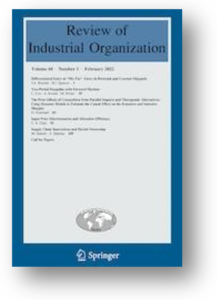
Abstract
The American Airlines/US Airways merger was initially challenged by US antitrust authorities partly because of the airlines’ significant takeoff/landing slot concentration and direct (overlap) competition at slot-controlled airports, Reagan National and LaGuardia. The approval of their merger required that they divest slots to other carriers. This paper examines whether these divestitures have preserved price competition in markets in which the merging airlines directly competed. We find that in the case of Reagan National, they have not, as prices increased in these markets. Instead, most of the procompetitive price effects have been in nonoverlap markets. In the case of LaGuardia, however, the divestitures preserved price competition in both overlap and nonoverlap markets. Several factors that affect the estimates include route direction, degree of overlap, distinction between nonstop and connecting routes, and carrier identity.
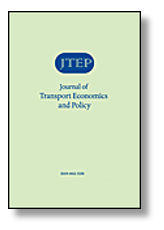
Abstract
This study investigates the price effects of the lifting of takeoff and landing restrictions at Newark Liberty Airport in October 2016. We use synthetic control methods to compare Newark Liberty’s airfares with those of a weighted combination of comparable airports in the United States. By exploiting the policy change as a plausibly exogenous shock to airfares, we find that nonstop and connecting airfares increased by up to 15.7 and 7.7 per cent, respectively. Though the airfare increases we find may appear counterintuitive, these positive price responses are primarily driven by post-intervention increases in air travel demand—up to 21.6 per cent.
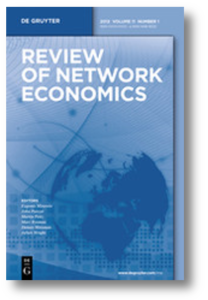
Abstract
Routine industrial analyses use internal market characteristics such as market shares to proxy for market power. However, recent studies argue that factors that are external to the market such as contact across multiple markets can be linked to tacit collusion. Using a structural demand and supply model for air travel, we quantify the variable profit effects of multimarket contact. We find that multimarket contact results in increases in variable profits ranging between $15,000 and $20,000 per contact in a quarter. Extrapolating this estimate across all contacts proves to be quite sizeable. These positive responses in profitability are especially stronger in less competitive markets. Our results, taken together, lend support to the mutual forbearance hypothesis.
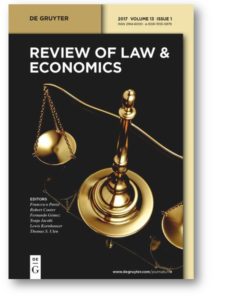
Abstract
When conducting routine welfare analysis, regulators typically associate the exercise of market power to internal market characteristics such as market shares. However, some researchers argue that factors that are external to a market such as contact across markets may have an impact on market outcomes. An interesting but unanswered question is: how do cross-market factors such as multimarket contact affect consumer welfare? Using a nested logit demand model for air travel, we are able to monetarily estimate the consumer welfare effects of multimarket contact. We find that multimarket contact results in a consumer welfare loss of $0.57 per contact. Extrapolating this welfare cost across consumers and across products proves to be quite sizeable. These negative welfare effects are stronger in long haul markets.

Abstract
When appraising code-sharing partnerships, policymakers are primarily interested in how such marketing arrangements affect prices. Expectedly, the pricing effects of code-sharing have been abundantly studied. This paper examines the impact of codeshare agreements on the itinerary routing of airline products in U.S. domestic markets. Using data from the U.S. Bureau of Transportation Statistics, we identify two main findings. First, consistent with the literature, we find that the overwhelming majority of domestic code-share itineraries involve a single operating carrier, a practice we refer to as virtual code-sharing. Second, and most importantly, we find that virtual (traditional) codeshare itineraries are associated with better (worse) path quality relative to itineraries marketed and operated by a single carrier in the same market. The path quality effects we find come from different sources. In the case of virtual code-sharing, the positive path quality effects come from both short- and long-haul markets whereas in the case of traditional code-sharing, the negative path quality effects originate from long-haul markets.
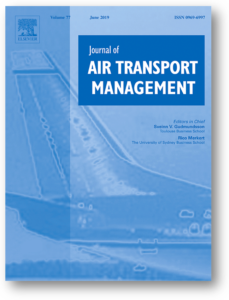
Abstract
This paper uses data at the trading day frequency and the method of local projections to quantify the dynamic responses of U.S. airline stock prices to a COVID-19 shock. We show that airline stock prices decline immediately by 0.1 percentage point in response to a 1% COVID-19 shock. In addition, the effect of the shock persists beyond the day on which it occurs, with most airline stock prices falling by as much as 0.6 percentage points after fifteen days. This negative response of airline stock prices to a COVID-19 shock is not explained by a COVID-19-induced increase in airlines’ variable costs, but rather by a COVID-19-induced decrease in air travel, which, in turn decreases revenues, profitability, and stock prices of U.S. airlines.

Abstract
Disclosure programs can help consumers with limited information about product quality make better purchase decisions. A quality disclosure mandate such as the On-Time Disclosure Rule in the U.S. that requires airlines to provide information on the quality of their products can be beneficial, but can also be counterproductive if it encourages airlines to act deceptively by “gaming” the system. If airlines care about public perceptions of their on-time record, they have an incentive to improve their on-time performance ranking by resorting to unscrupulous means such as padding their schedules beyond normal time required to absorb scheduling stochastic fluctuations. This study investigates the impact of competition on airline schedule padding. We construct a measure for schedule padding under different optimal flight time choices. Using different measures of market structure, we find that more competitive (concentrated) markets are subject to less (more) schedule padding.
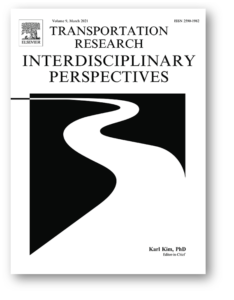
Abstract
This paper examines the effects of the COVID-19 pandemic on flight delays in the U.S. airline industry. Using daily data on COVID-19 cases and flight on-time performance, and controlling for product, carrier and market characteristics, we find that increases in reported COVID-19 cases are associated with reductions in both departure and arrival delays. Specifically, a standard deviation increase in COVID-19 cases reduces arrival delay by 1 min 42 s and departure delay by 2 min, on average. Our results suggest that despite the economic fallout from the pandemic, a silver lining emerges—flights are departing and arriving with less delay amid the pandemic.
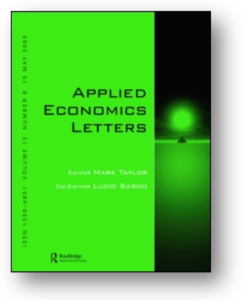
Abstract
This note provides a rationale for the current trend in airline schedule padding by studying the strategic behavior of carriers that may decide whether or not to pad their flight beyond the optimal time necessary for flight completion. Using a structural demand and supply model for air travel, our results indicate that the positive price effects of schedule padding we observe are primarily driven by cost increases (inefficiency effect) rather than increases in markup (marketing effect).
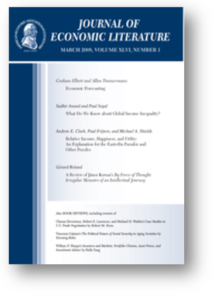
Book Review
Airline Economics in Europe. Edited by Kevin Cullinane. Advances in Airline Economics, vol. 8. Bingley, UK: Emerald, 2019. Pp. ix, 256. ISBN 978–1–78973–282–5, cloth; 978–1–78973–281–8, online; 978–1–78973–283–2, EPUB. JEL 2020–0094

Abstract
We examine the impact of flight delay on market power in the U.S. airline industry. Consistent with the literature, our estimation results confirm that flight delays are associated with negative consumer welfare effects. Most importantly, we find that poor on-time performance negatively impacts product markup—proxy for market power. Furthermore, we are able to decompose these markup effects into price and marginal cost effects and evidence suggests that the source of these negative markup effects is primarily driven by negative price responses.

Abstract
We investigate the impact of domestic code-sharing alliances on airline on-time performance (OTP). We examine this issue in the U.S. airline industry, where major domestic carriers are required to report their OTP. Using the data collected by the Department of Transportation (DOT) and employing a methodology that allows us to match on-time performance data to passenger itineraries, our analysis yields two main findings. First, consistent with the literature, we find that the overwhelming majority of domestic code-share itineraries involve a single operating carrier, a practice we refer to as virtual code-sharing. Second, and most importantly, we find that codeshare itineraries are associated with less arrival delay relative to itineraries marketed and operated by a single carrier.

Abstract
There are both market power and cost efficiency effects associated with airline mergers. Previous studies, however, have primarily focused on merger price effects, which is the net effect of these two forces. This paper attempts to decompose and measure these effects by using a model that allows us to derive proxies for market power and cost efficiency. In particular, we are interested in merger effects in markets where the merging airlines directly competed prior to their merger. We study two main mergers–Delta/Northwest and United/Continental–and find that both increase market power in markets where the merging airlines competed prior to merger. We also find evidence of marginal cost efficiencies associated with both mergers. These efficiency effects are relatively larger than the market power effects and come from different sources. In the case of the Delta/Northwest merger, efficiencies come from markets where the merging airlines competed prior to the merger, whereas in the case of United/Continental, they come from markets where the merging firms did not compete. The market power effects only stem from markets with pre-existing competition among merging airlines, perhaps due to the elimination of a competitor in those markets. These findings, thus, support the long-standing hypothesis that market power and efficiency are important in motivating horizontal mergers.
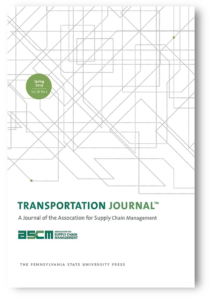
Abstract
Following the passage of the Airline Deregulation Act in 1978, the degree of competition among air carriers increased significantly. Airlines resorted to many ways—including code-sharing— in response to competitive pressures. This paper is a retrospective study on the load factor effects of the largest domestic codeshare partnership established in 2003—between Delta, Northwest and Continental Airlines. After controlling for aircraft configuration, carrier and market characteristics, we find evidence that code-sharing improves the partners’ load factors relative to other carriers in all markets combined. However, we find statistically significant negative (positive) codeshare effects on load factor in markets where the codeshare partners competed (did not compete) prior to code-sharing.

Abstract
Disclosure programs are quality assurance instruments when consumers are imperfectly informed about product quality. This study examines the On-Time Disclosure Rule for airline on-time performance, which ranks airlines based on how well their flights arrive/depart on time. The program creates incentives for airlines to pad their flight schedules and artificially improve their reported on-time performance. Using a discrete choice demand model for air travel, we investigate how schedule padding affects consumer preferences. We find that schedule padding is associated with negative consumer welfare effects, reinforcing the notion of an unanticipated gaming behavior by firms that ends up harming consumer welfare.

Abstract
A key concern to policymakers when appraising code-sharing partnerships between airlines hinges on how such arrangements affect prices and service levels. Naturally, most studies on code-sharing have disproportionately focused on its price effects. This paper examines the impact of domestic code-sharing on flight delay. Using a methodology that enables us to match airline on-time performance data to passenger itinerary data, we find that codeshare products—virtual and traditional—are consistently associated with less arrival delay. These results are robust to different measures of on-time performance, even after controlling for product and market characteristics, and irrespective of market hauls.
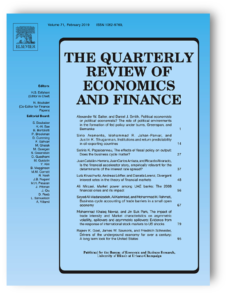
Abstract
Although the scalability of microfinance has gained much attention in recent times, questions about its effects remain largely unanswered. Within the rationale for scalability, resides the inherent notion that a microfinance institution could make up for its loan-size disadvantage by disbursing enough small loans that would potentially translate in scale economies and thus cost efficiency gains. We test this assertion in the presence of “uncontrolled growth”–the surge in microfinance lending during the boom years of 2004-2008. In a nutshell, are cost efficiencies evident during rapid microfinance expansion? We find that aggressive microfinance growth consistently results in cost inefficiencies.

Abstract
This paper estimates the value consumers place on air travel on-time performance (OTP), and the extent to which airlines are motivated to improve their OTP. We find robust evidence that consumers value OTP and are willing to pay to avoid delays. Airlines can invest to improve OTP, but would independently choose to do so only if on-time performance improvement leads to increases in profitability. Using a methodology that does not require having actual cost data to draw inference on cost changes associated with improvement in OTP, we analyze airlines’ optimal OTP-improvement investment choice. The modeling framework allows us to provide estimates of OTP-related marginal investment costs per minute of improvement necessary to achieve specific percent reductions in arrival delay minutes from the current levels of arrival delay minutes observed in the data.
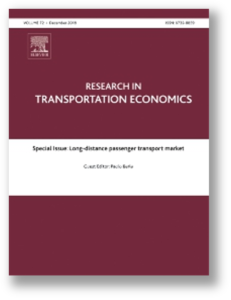
Abstract
Perhaps, owing to the unavailability of delay data on passengers’ flight routing, a challenge in air travel demand estimation is the examination of consumer response to flight delay within an origin-destination framework. An interesting but unanswered question is: how does air travel delay at various airports along a given itinerary affect consumer choice behavior? Using a methodology that enables us to match airline on-time performance data to passenger itinerary and estimating a discrete choice demand model, this paper finds that increases in flight delay negatively impacts the likelihood of choosing a product and that welfare costs of delay to consumers may be substantial. These results are robust across different measures of on-time performance and irrespective of market hauls.
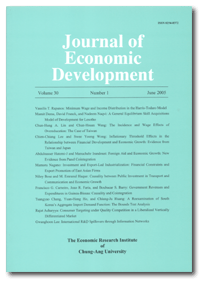
Abstract
Using linear panel methods, this article tests whether the surge in micro finance lending during the boom years of 2004-2008 hurt loan repayment rates. Surprisingly, we find evidence that loan delinquency is inversely related to microfinance growth. This result is contrary to the long-standing view that fast micro finance expansion leads to increased loan delinquency. This suggests the existence of a larger pool of high quality borrowers that have not yet been tapped in new markets. This finding is robust across estimation methods and even after controlling for cross-sectional and temporal dependencies.

Abstract
Although airline on-time performance has always received much attention, we are unaware of any empirical research that measures the on-time performance effects of domestic airline alliances. In this study, we empirically investigate the on-time performance effects of the largest domestic alliance—between Delta Air Lines, Northwest Airlines and Continental Airlines. We find evidence that codesharing improves alliance partners’ on-time performance and that the size of the codeshare effect on on-time performance depends on pre-alliance competition in a market, with the effect being larger in markets where the partners competed in prior to the alliance.
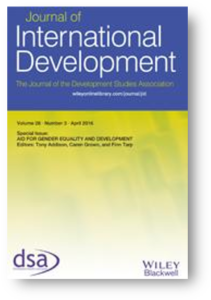
Abstract
Most empirical studies in microfinance have disproportionately focused on its downstream effects—effects on the borrower—leaving the important question of how microfinance institutions are affected in the process, largely unanswered—upstream effects. This paper addresses this question by using panel data estimations to empirically investigate the causal effect of microfinance growth on microfinance institution loan portfolio quality. Surprisingly, we find evidence that portfolio quality improves with growth in outreach, which is contrary to the dominant view that higher growth leads to increased default risk. This result is robust across estimation methods and even after controlling for microfinance institutional characteristics and macroeconomic indicators.
